NCERT Solutions for Class 9 Maths Chapter 5 exercise 5.1 and 5.2 of introduction to Euclid’s geometry free in English Medium and Hindi Medium to use. Class 9 Maths solutions with complete explanation for all chapter are given to download.
NCERT Solutions for Class 9 Maths Chapter 5
If you need solutions in Hindi, Click for Hindi Medium solutions of 9 Maths Chapter 5
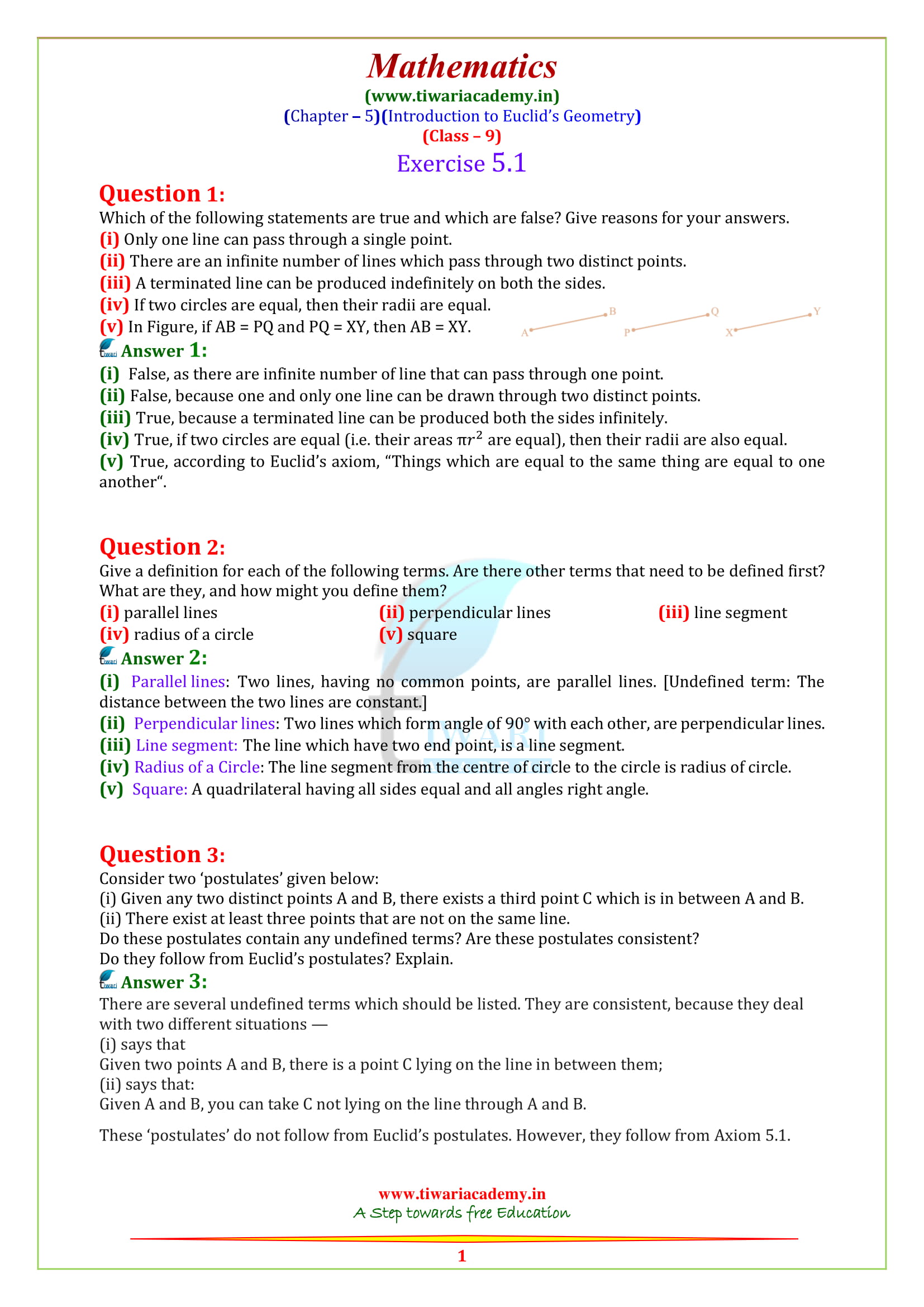
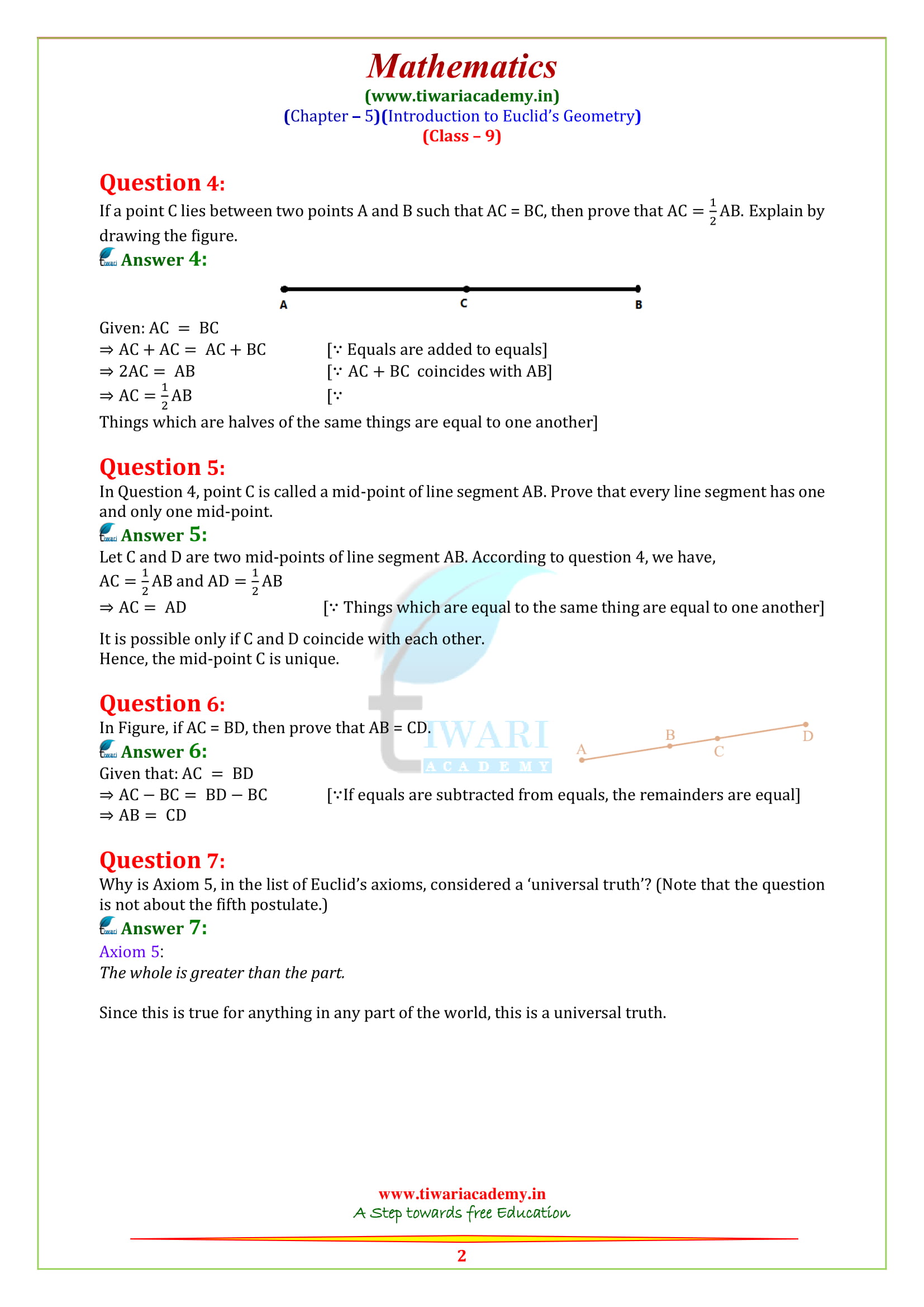
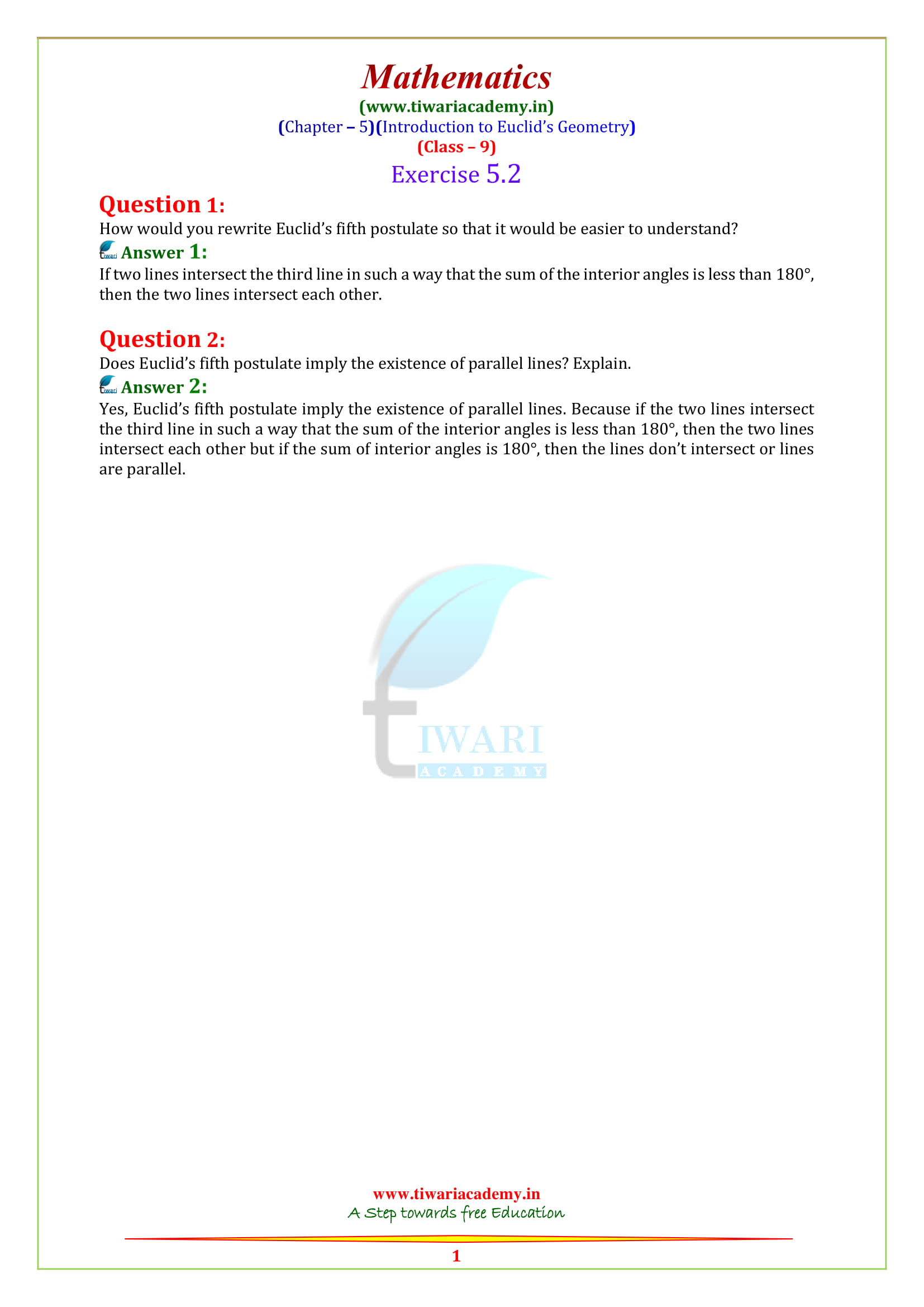
9 Maths Chapter 5 All Exercises in Hindi
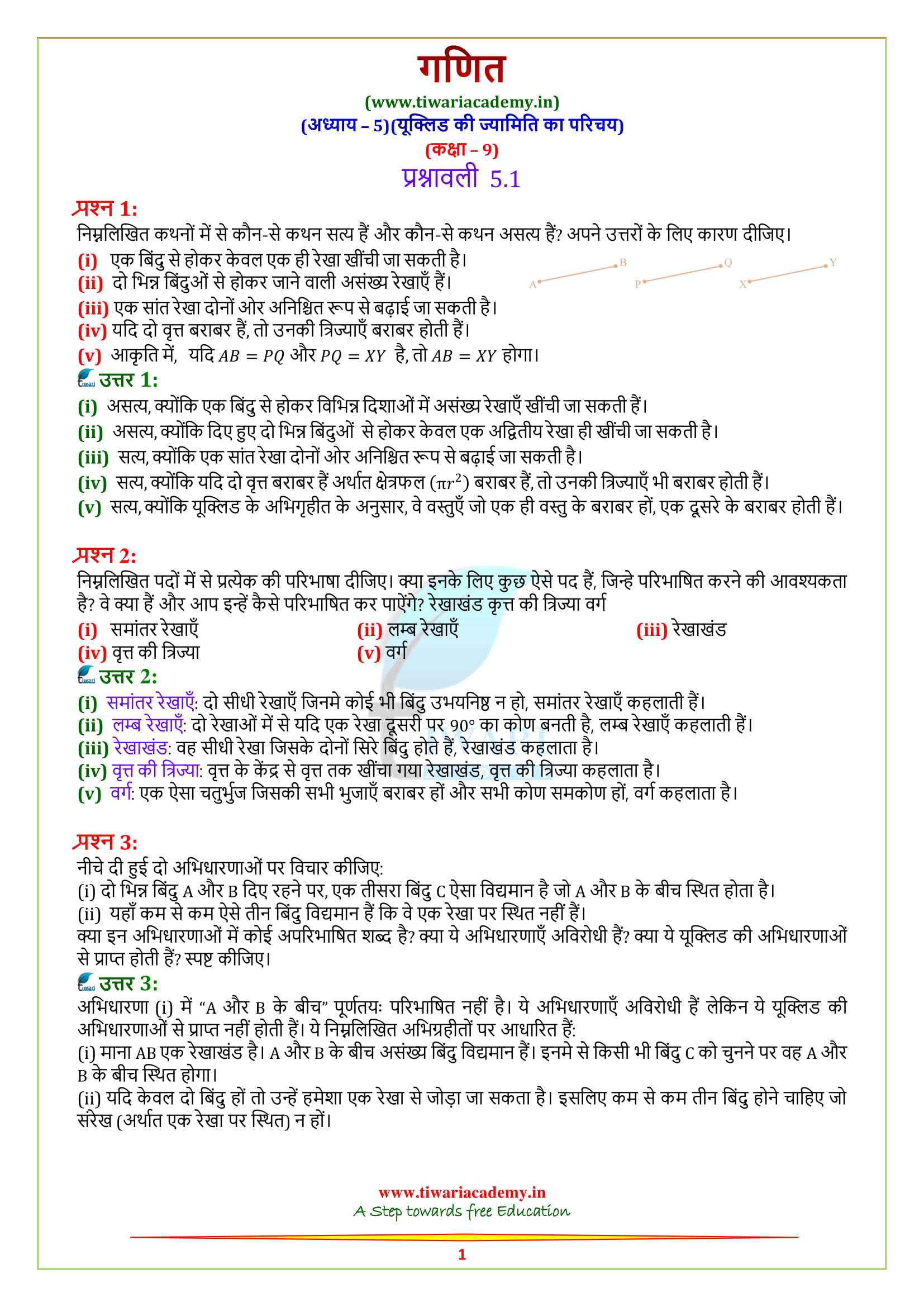
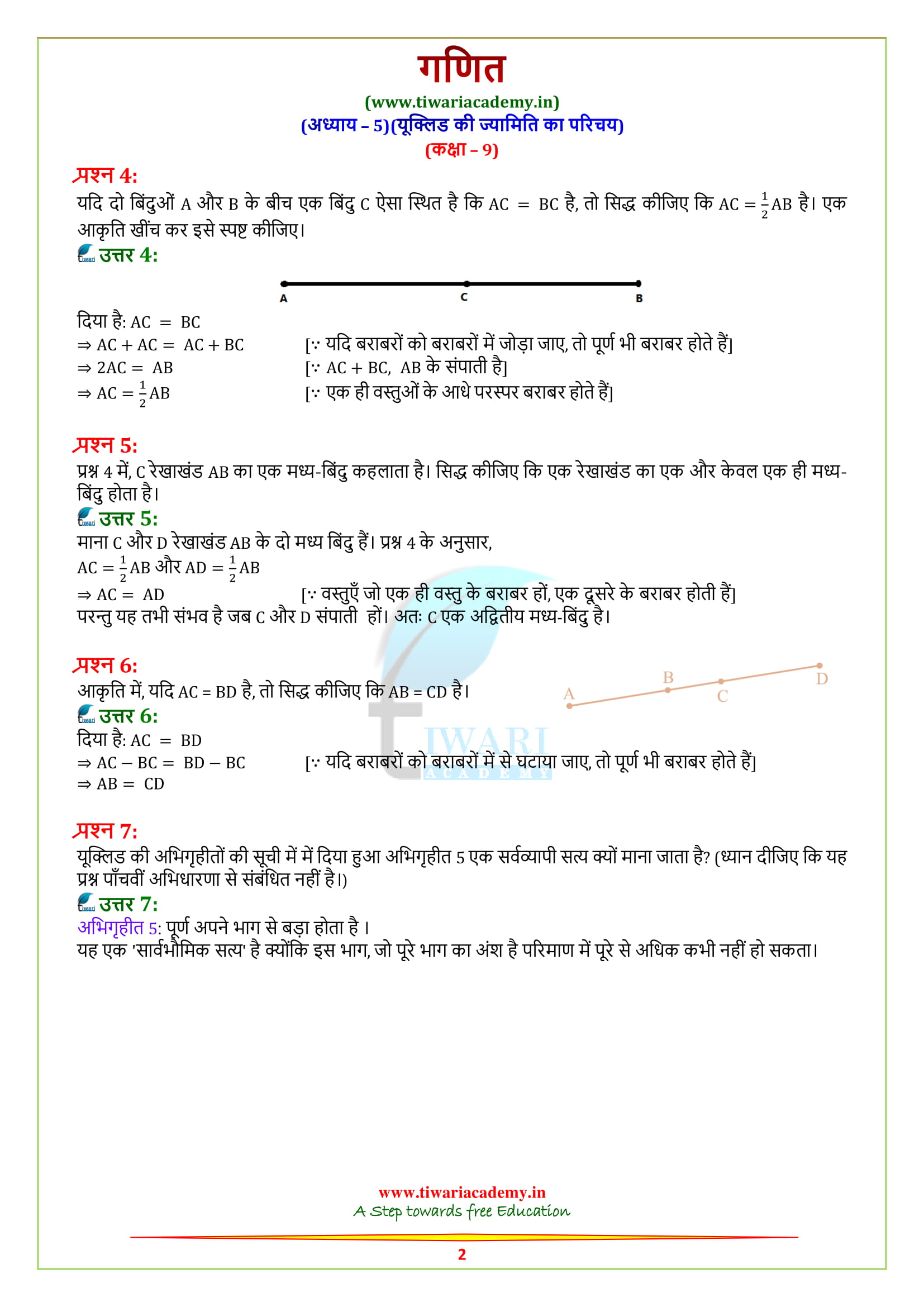
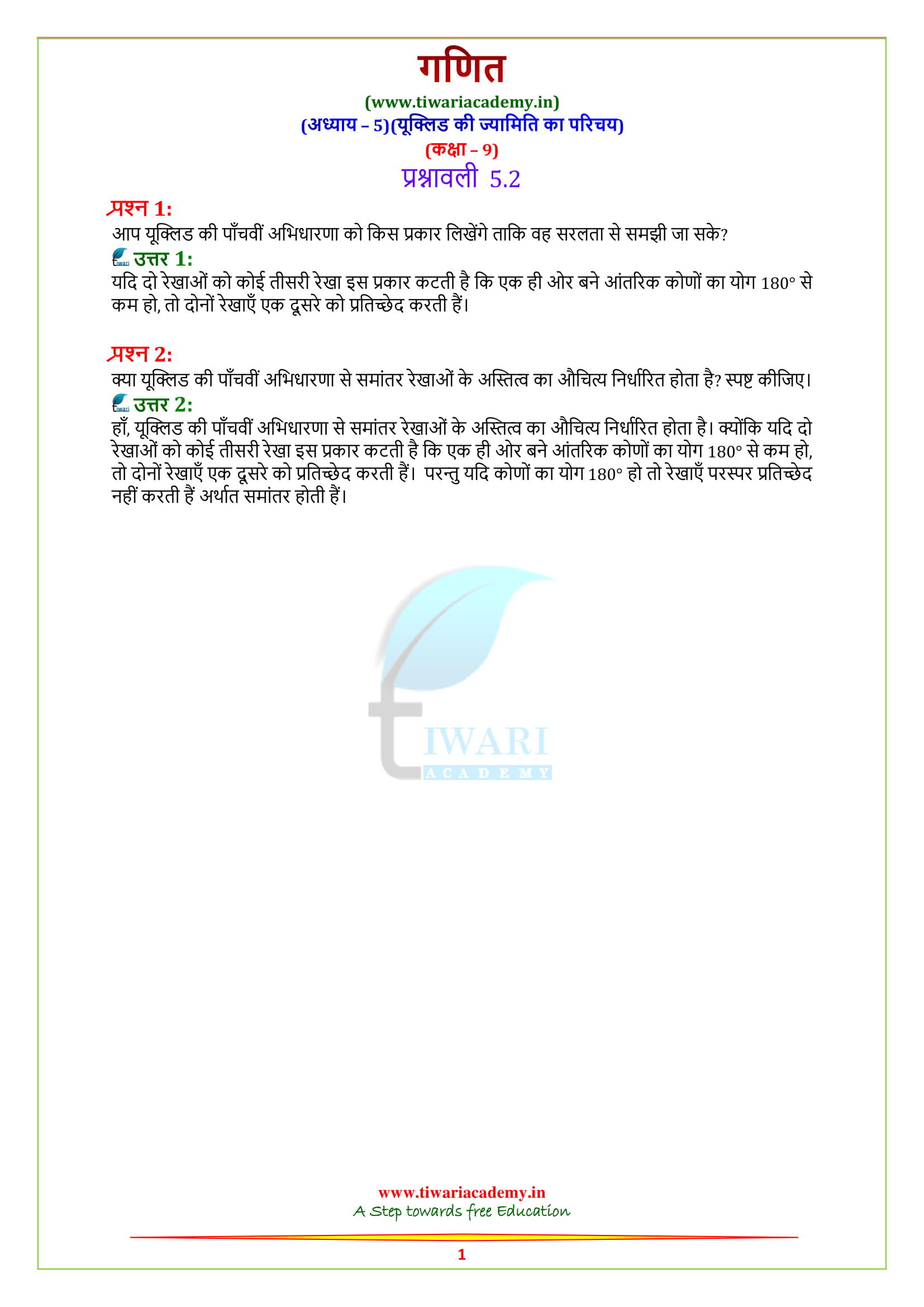
To get the solutions in English, Click for English Medium solutions.
Euclid’s Definitions
- Point: A Point is that which has no part.
- Line: A line is breadth less length.
- Straight Line: A straight line is a line which lies evenly with the points on itself.
- Surface: A surface is that which contain length and breadth only.
- Plane Surface: A plane surface is a surface which lies evenly with the straight lines on itself. Two distinct lines cannot have more than one point in common.
- Axiom or Postulates: Axiom or Postulates are the assumptions which are obvious universal truths. They are not proved.
- Theorems: Theorems are statements which are proved using definitions, axioms, previously proved statements and deductive reasoning.
Class 9 Maths Chapter 5 – Euclid’s Geometry
Important Questions with Answers
- Write the number of dimensions, that a surface contain. [Answer: Two]
- A proof is required for _______ (Postulate, Axioms, Theorem). [Answer: Theorem]
- The number of line segments determined by three collinear points is _______ (Two, three, only one). [Answer: Only one]
- Euclid stated that if Equals are subtracted from Equal then the remainders are equal in the form of ________ (an axiom, a definition, a postulate). [Answer: Axiom]
- How many lines can pass through a single point? [Answer: Infinite]
- State Euclid’s first postulate.
- Write Euclid’s fifth postulate.
- If a + b = 15 and a + b + c = 15 + c. which axiom of Euclid does the statement illustrate? [Answer: Second Axiom]
- If A, B and C are three points on a line and B is between A and C then prove that AC – BC = AB.
- If x + y = 10 and x = z then show that z + y = 10.
- Solve the equation x – 10 = 15, State which axiom do you use here. [Answer: Second axiom]
- If a point C lies between two points A and B such that AC = BC then prove that AC = 1/2.AB
- Prove that every line segment has one and only one mid-point.
- State true or false
(a) only one line can pass through a single point.
(b) There are infinitely many number of lines which passes through the two distinct point.
(c) Euclid belongs to Greece. [Answer: (a) false, (b) false, (c) true]
- An equilateral triangle is a polygon made up of three line segment out of which two line segments are equal to the third one and all the angles are 60° each. Can you justify that all sides and all angles are equal in equilateral triangle.
- RAM and Shyam are two students of Class IX. They give equal donation to a blind school in the month of March. In April each student double their donation.
(a) compare their donation in April.
(b) what values are depicted in the question
(c) which mathematical concept have been covered in this question? [Answer: (a) Donation amount is same in April, (b) Helpful Humanity, (c) Euclid’s Axiom]
- Monika and Vasu have the same weight if they each gain weight by 2kg. How will their new weights be compared?
(a) what values are depicted in this question?
(b) What mathematical concept have been covered in this question? [Answer: (a) logical reasoning (b) Euclid’s axiom]

